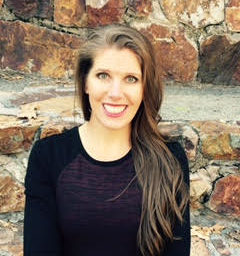 Although heart disease kills more than 700,000 women a year, a mortality rate much higher than breast cancer and the leading cause of death among American women, breast cancer seems to affect us on more personal level.
Although heart disease kills more than 700,000 women a year, a mortality rate much higher than breast cancer and the leading cause of death among American women, breast cancer seems to affect us on more personal level.
Breast Health Recommendations
Breast health screening should begin first in our youth (with the onset of menstruation at menarche) performing self-breast examinations every month.
The more consistently self-breast exams are performed, the more familar women become with their natural, unique shape and density. And women can determine changes in breast health as they compare for any changes month to month.
As we age, breast screening recommendations add mammogram yearly beginning at the age of 40. Mammograms are considered to be the medical standard of care for yearly breast cancer screening and are covered by most insurance companies beginning at the age of 40.
High-risk women are recommended to complete a baseline mammogram at age 35.
If a primary maternal blood-relative (mom or sister) has been diagnosed with breast cancer, the recommendation encourages mammography when you reach the age at which the relative was diagnosed with breast cancer (i.e. if Mom was diagnosed at 30, you would be screened at age 30).
Once women have experienced their first mammogram, most begin to understand that mammograms are limited in their screening ability for breast cancer for many reasons, including:
breast implants,
the size and density of their breasts,
and because not all of the breast tissue can “fit” or be “pulled” under the compression device (despite the examiner’s best efforts)–leaving the breast tissue that sits near the shoulder, under the armpit, and along the side of the body with limited screening evaluation.
Women tell me that they procrastinate mammograms due to fear of discomfort or implant rupture.
Many also recognize that yearly radiation exposure to the breast tissue is not without its implied risks.
And studies report that pressure on the breast tissue (42 pounds of pressure) can cause the breast tissue capsule (which surrounds, supports, protects, and encapsulates the breast tissue) can rupture, and damage to the tissue capsule may increase the risk of breast cancer.
Women are beginning to ask about breast screening alternatives to mammography.
There are breast cancer detection alternatives to mammography for women. Each has their benefit and limitation.
Breast ultrasounds: Breast Ultrasounds are helpful in distinguishing fatty, dense and fibrous breast tissue from a cancerous mass, and are often performed after a mammogram is interpreted as suspicious for dense tissue or a mass. Breast ultrasounds are considered to be diagnostic, and require a medical provider’s order. Insurance companies typically will not pay for breast ultrasounds unless an abnormal mammogram is reported.
MRI’s: MRI’s are most often used as a diagnostic tool following an abnormal mammogram and/or an abnormal breast ultrasound, in high-risk women, in women with history of breast cancer, or to follow results of breast cancer treatment. MRI’s are rarely used as an initial screening tool due to cost, and require a medical provider’s order. Insurance typically will not pay for breast MRI scans unless an abnormal mammogram, abnormal ultrasound, abnormal biopsy, or breast cancer has been reported.
Thermography: Thermography is another available option for breast cancer screening. It is rarely covered by insurance, so women who chose thermography as a breast screening option often pay for this out-of-pocket or with health-savings dollars. There are many benefits to thermography. I have listed them below. The only draw-backs to thermography are: cost (not covered by insurance, so this becomes a self-pay option), and not supported as a standard of care by the medical community (due to lack of understanding, lack of education, and financial investments in mammography as a medical business).
Let’s Review: Mammography Breast Screening Limitations
1. Mammograms cannot view the entire breast at once (thus the need for multiple “views” and images).
2. Mammograms pose a risk of implant rupture.
3. Discomfort and pain (most women site this as the primary reason they avoid yearly mammograms).
4. Limited success at differentiating between normal fibrous (dense) breasts tissue assiciated with aging calcification and fibrocystic breast diease, versus a cancerous mass.
5. Large breasts at very difficult to view.
6. Unable to detect early cancers–must be a “mass” of bad cancer cells to be identified, which can take 3-5 years to cluster a mass large enough for mammography detection.
7. Poor opportunity for early intervention–once a mass is identified, ultrasound and biopsy are the next steps before MRI, surgery removal of breast tissue/lymph nodes, radiation/chemotherapy.
8. Unable to identify inflammation in the chest wall and surrounding tissues.
9. Radiation exposure to breasts, surrounding structures, and chest.
Thermography
Breast thermography offers an alternative to detect breast cancer.
Thermography uses heat and temperature, “colors,” to detect breast cancers.
Using the temperature theory that blood flow is “hot”, the body temperature is “warm”, and fatty breast tissue is “cool” due to lack of blood flow through fat, thermography looks for “hot” colors in the breast tissue where there should not be any.
For example, cancer is vascular and creates its own blood-flow system (angiogenesis) so that it can grow rapidly, and then spread quickly within the body. Cancer, as interpreted by thermography, is “hot” and can be detected in very early stages when the cancer is just beginning to establish its blood supply, and often before it is large enough to be detected by mammography.
Early Detection and Intervention is Key for Survival.
There are many obvious benefits to breast thermography, as compared to mammography, that should be considered when deciding which tool you will use for your breast health screening.
Benefits of Thermography for Breast Cancer Screening
- Safe, easy, and pain free
- No radiation exposure
- Differentiates between benign fibrocystic (hard) breast disease versus tumors
- No compression of breast tissue, or damage to the capsule, that encapules and protects the breasts
- Detects early changes in breast tissue that accompany the smallest of tumors, beginning with inflammation and increased blood flow
- Entire breast can be imaged at once
- Useful for evaluating chest wall after surgery
- Effective for breasts of all sizes
- Effectively and safely screens breasts with implants
- Easy interpretation: Red, orange, and yellow colors are “hot” and indicate increased blood flow; Green and blue colors and “cold” and indicate no blood flow/fat.
- Creates opportunities for early detection, thereby allowing for early intervention
To determine if thermography is a breast screening option for you, to learn more about breast thermography, or schedule with a Utah thermography provider, visit:
http://www.utahthermography.com
Live Life Optimally,
Kristie
 Kristie is a wife and mother of 4 and an athlete. She has been working in healthcare for more than 25 years. Kristie’s goal is to assist her patients to achieve and maintain an exceptional level of health and life-balance. She successfully blends prevention, optimization, hormone therapy, and age management with balanced and healthy living into her progressive wellness and integrative medical practice.
Kristie is a wife and mother of 4 and an athlete. She has been working in healthcare for more than 25 years. Kristie’s goal is to assist her patients to achieve and maintain an exceptional level of health and life-balance. She successfully blends prevention, optimization, hormone therapy, and age management with balanced and healthy living into her progressive wellness and integrative medical practice. 











Leave a Reply